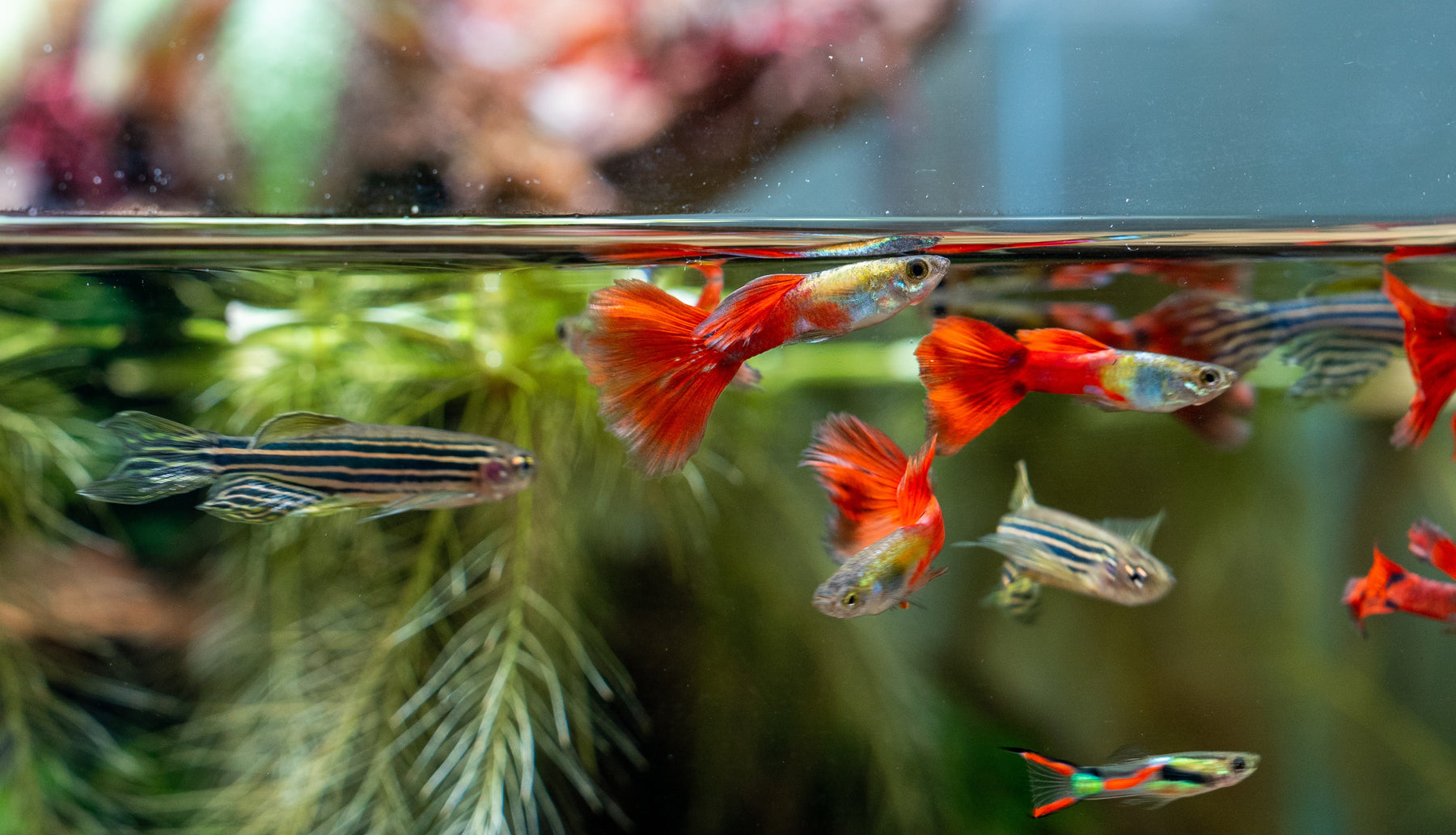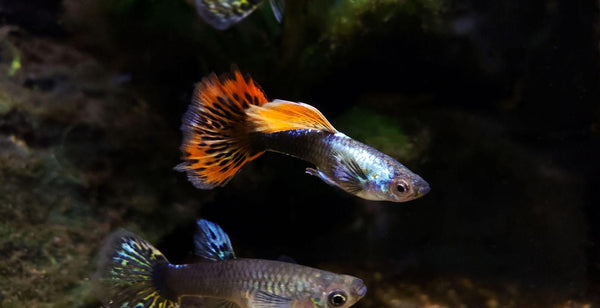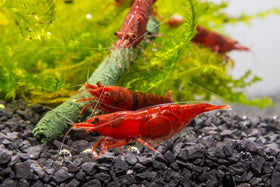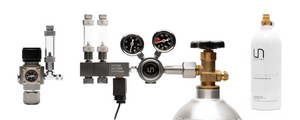
Top 10 Fish for a Community Tank
What makes a great freshwater fish for a community tank setup?
The best fish for community tanks often have shared characteristics. Many of them are naturally peaceful schooling fish that aren't territorial. Popular community tank species often aren't timid or shy swimmers and are active by nature, seen as being curious of their surroundings.
Community fish tend to do better when there are at least six or more of the same species in their group. This larger group makes them feel more at ease and lets them show off their vibrant colors. Additionally, these community fish are usually of a moderate size, which prevents them from being considered prey by other tankmates and also reduces the chances of them bullying smaller fish. Lastly, since community aquariums house multiple species, it's important that these fish can handle various water conditions and get along with different tankmates. 
Now that we know the defining characteristics of the best community tank fish, what species fit the criteria?
In this article, we'll discuss the 10 best community fish for freshwater community tanks. Specifically, you'll learn about what makes them suitable aquarium tankmates and why you should consider them for your next community fish tank.

1. Cory Catfish (Corydoras)
Corydoras species are a popular peaceful bottom-dwelling catfish that helps clean up any uneaten food that falls to the bottom of the tank. Cory Cats are available in many subspecies, each having their own unique sizes, colors, and patterns. They’re active, inquisitive fish that constantly sifts through the substrate scavenging for food, making them quite fun to watch.
In the wild, Cory Cats are often found schooling in groups of tens or even hundreds. The more Corydoras you have of the same species, the more comfortable and open they will behave in your tank. They're often observed staying close to one another as they move around the tank. Another thing to consider when getting Cory Cats is to use a softer substrate like sand to prevent them from getting hurt as they sift through it for food.

2. Neon Tetra (Paracheirodon innesi)
The Neon Tetra is one of the most popular fish in the aquarium hobby, characterized by its strikingly vibrant red and blue coloration. They’re a small schooling species that max out at about 1.5 inches and are tolerable of a wide range of parameters, resulting in relatively easy care requirements. These tetras also get along well with others, making them a great option for a community tank. These fish display more vibrantly in groups of at least 6, so the more the merrier if you’re considering adding them to a freshwater community setup.

3. Cherry Barb (Puntius titteya)
Cherry Barbs get their name from the stunning bright red color that the males will get when they are mature. They look exceptionally beautiful, especially in a planted aquarium against live plants where the green of the plants helps the red in these fish pop! In many cases, when people think of Barbs, they assume that the species is aggressive and nip at the fins of other fish. This is not the case when it comes to Cherry Barbs. They are peaceful fish that would do great in a community tank. The only times they may show slight aggression is when the males are establishing a pecking order.

4. Guppy (Poecilia reticulata)
One of the most popular fish in the hobby, Guppies come in a variety of colors and tail shapes. They make a stunning addition to a community tank with their varied patterning and fast, active swimming style. Guppy fish are also livebearers, meaning fry are born already free-swimming. This makes them one of the easiest fish to breed.
Guppies aren't finicky about parameters, and can adapt easily to different water conditions. They're also not picky eaters, so feeding them specifically in a community set-up isn't an issue. If you want a lively and colorful aquarium in which everyone gets along, guppies are a go-to stocking option.

5. Platy (Xiphophorus maculatus/variatus)
Another livebearer, Platies are a common choice for beginners because of their beautifully varied colors and patterns. Like Guppies, there are many strains of Platies to choose from. While platies ideally prefer temperatures of 70F-82F, they can handle temperatures as cool as 60F.
These fish are known as "water puppies", as they're very active and fun to watch as they explore their surroundings. They are not shy and will come right up to the front of the tank to beg for food. Platies are a great addition to a community tank, especially if you’re looking to add something energetic and colorful.

6. Bristlenose Pleco (Ancistrus sp.)
The Bristlenose Plecostomus, also called the Bushynose Pleco, gets its name from the long dangly things on the faces of grown-up males. They come in many different varieties and are very popular in the fish-keeping world because they stay relatively small, have vibrant colors, and sport funky patterns. They usually top out at about 4-5 inches, which is way more manageable in community tanks compared to those other Plecos that can grow to a whopping 12 inches.
Here's the cool part - these fish are like nature's Roombas for your aquarium. They're great at munching up diatoms (those pesky brown algae). However, they're not just algae-eating machines. Bristlenose Plecos are omnivores, which means they enjoy both veggies and meat. You can supplement their diet with wafers, pellets, or blanched veggies like cucumber slices.

7. Dwarf Gourami (Trichogaster sp.)
The Dwarf Gourami is a beautiful inhabitant in a tank of other species and makes for a great centerpiece for a small to medium-sized tank. There are usually no problems when it comes to interacting with other fish. However, there may be aggression amongst a group of Gouramis, so it's recommended to keep just one in a tank.
They come in different color forms, common ones being the Powder Blue, Neon Blue, and Flame Dwarf Gouramis. These fish get to a good length of about 3.5 inches, making them the perfect size to be the main feature fish for a 10 to 20-gallon tank.

8. Oto Cat (Macrotocinclus affinis)
Oto Cats are arguably one of the cutest algae-eaters in the aquarium hobby! They are nano fish that don't get bigger than 1.5 - 2 inches. Like the Bristlenose Pleco, they excel at removing brown algae from an aquarium. They are a favorite for planted freshwater tanks since their small size does not disturb the substrate much, and they help maintain a clean tank.
Otocinclus are generally shy fish and prefer to be kept in groups of 6 or more. It's encouraged to keep them in an aquarium with lots of live aquatic plants and hardscape to provide shelter so they can seclude themselves.

9. Celestial Pearl Danio (Danio margaritatus)
Celestial Pearl Danios, also known as Galaxy Rasboras, are known for their mesmerizing pattern that features glimmering hues of blue and orange. They stay very small, maxing out at just 1 inch.
Celestial Pearl Danios feel more comfortable in groups of at least 10. They can get very timid without a large group, and may hide for a majority of the time. A larger amount of these fish will help make them feel safe enough to explore the entirety of the aquarium. They make peaceful community fish that would do well with other fish species, as long as their tankmates are not large enough to fit them in their mouths.

10. Rummynose Tetra (Hemigrammus rhodostomus)
The Rummynose Tetra is a stunning schooling fish known for its bright red face and bold black-and-white striped tail. The color of its face is actually a good indicator of whether the fish is healthy or not. When these fish are feeling their best, their faces will be a very vibrant red, but when they are feeling under the weather, the red becomes faded and dull.
In large groups, they tend to stick together as they roam around the aquarium. The way they school together tightly makes for a stunning visual in a community tank. They are also very friendly fish that are non-combative with other species, making them a great choice for a community tank.
 Notes on Community Fish Selection
Notes on Community Fish Selection
Now you have an understanding of the best fish species for a community tank! From nimble rummy-nose tetras to easygoing platies, each fish brings its own unique charm to a multi-species aquarium. Remember, the key to a successful community tank is choosing fish that are compatible with other species and are able to live in harmony together. So, whether this is your first community tank or your fifth, you can't go wrong with adding any of these species to a vibrant and active community tank.
Ready to add friendly fauna to your community aquarium? Click here to check out our selection of freshwater aquarium fish.
Tell us - Was this article helpful? Please leave a comment below!
If you have any questions regarding this article, please email support@buceplant.com, or DM us on Instagram or Facebook so we can assist you directly - @buceplant





Comments
Leave a comment